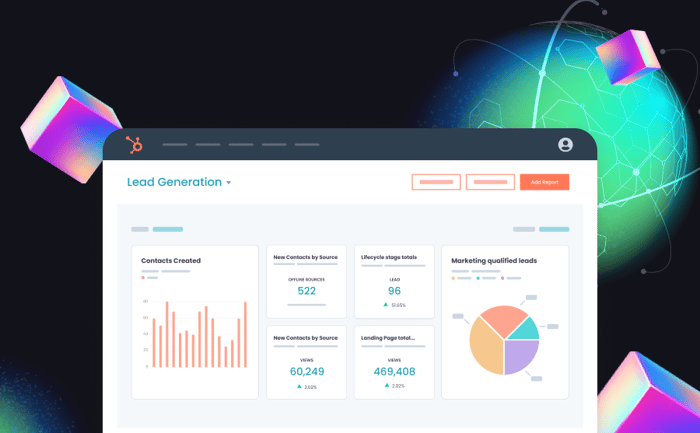Email Marketing Strategic Automations & Workflows Strategy Delivery
Everything to Know About HubSpot Workflows
02/01/2024 • 10 min read • Written by Lynton Team
Table of Contents
Efficiency is critical for your digital marketing campaigns and sales efforts. So, how do you achieve it? With HubSpot's automation and workflows.
The HubSpot tools offer an effective solution for anyone striving to streamline their processes. If you're looking to optimize your marketing, sales, or service activities, understanding HubSpot workflows is essential.
In this blog, we'll dive deep into what HubSpot workflows are, how to create and use them effectively, and explore their different aspects, including the advanced area custom code workflows.
Let's dive in!
What is a HubSpot Workflow?
A workflow is a series of automated actions triggered by a specific event or criteria. HubSpot's workflow tool takes this concept to the next level, allowing businesses to automate complex, repetitive tasks, saving time and enhancing efficiency.
This tool is a central feature of HubSpot's CRM platform and is widely used for marketing, sales, and service activities. For instance, businesses use HubSpot workflows for various purposes, such as lead nurturing, customer engagement, sales follow-ups, and internal processes.
The beauty of HubSpot workflows lies in their versatility and ability to be customized to fit the unique needs of each business. Whether sending out targeted emails, updating contact properties, or assigning tasks to team members, workflows streamline these actions, ensuring no opportunity is missed.
Different Aspects of HubSpot Workflows
HubSpot workflows are multifaceted, offering various features that cater to different business needs. Let's explore some key aspects of them:
- Workflow Goals: Define clear objectives for each workflow, helping you measure success and make necessary adjustments.
- Workflow Enrollments: These criteria trigger a contact's enrollment into a workflow. Understanding and setting these ensures the right audience is targeted.
- Workflow Errors: Occasionally, workflows may encounter errors, such as a missing email template or a broken link. Regular monitoring helps identify and rectify these issues promptly.
- Workflow Delays: Incorporating delays allows you to time your actions perfectly, enhancing the impact of your workflow.
- Branching Logic: This feature lets you create different paths within a workflow based on specific criteria, allowing for highly personalized experiences.
- Workflow Analytics: This aspect provides insights into the performance of your workflows, including metrics like open rates, click-through rates, and conversion rates. This data is crucial for understanding the effectiveness of your workflows and identifying areas for improvement.
- Contact Management: Effective management of contacts is essential in workflows. This includes updating contact properties based on their interactions with the workflow and ensuring that the CRM reflects the most current state of each contact.
- Testing and Optimization: A/B testing features allow you to test different versions of emails or workflow steps to see which performs better. Continuous testing and optimization lead to more effective workflows over time.
- User Segmentation: Segmentation capabilities in workflows enable you to target specific groups of contacts with tailored messages based on their behaviors, preferences, or demographics, increasing the relevance and effectiveness of your communication.
These varying aspects allow you to create efficient and highly effective workflows to achieve your business objectives.
Types of HubSpot Workflows
It's time for the fun stuff: the different kinds of HubSpot workflows you can use! To start, there isn't a single workflow that works for everything. Workflows are designed to target individual needs and interact with leads based on their current interest and interaction with your company.
Therefore, there are different types of workflows designed to meet specific requirements. For example, HubSpot offers contact-based, deal-based, ticket-based, and company-based workflows. You can drill in even further, too.
A contact-based workflow is great for email marketing, creating associated records, and integrating with third-party applications. A deal or ticket-based one generally handles all kinds of sales and customer service automation, like sending internal reminders to reps or triggering kick-off emails to new customers. Company-based is ideal for setting up company properties internally and anything else to manage communication at the company level.
With that said, you can take it a step further with even more specific use cases. Take a look at some workflow types for effective marketing, sales, customer service, and more.
Marketing
Drive New MQLs: Use a workflow that engages existing leads with content relevant to their current interest in your business. Since they are most likely considering your services, stick with informational content that explains your business before you dive into offers.
Re-Engagement Campaigns: You don't want leads that aren't interested in your business. Re-engage them by providing valuable offers. If they don't answer, allow them to opt out.
Blog Subscribers/Get New Blogs: Using a workflow that welcomes new blog users and provides them with valuable content and information regarding their subscription will retain new leads.
Post-Event Workflows: It's always great to reach out after an event. These workflows can help you thank attendees, provide them with additional information and products, and further cultivate your relationship with them.
Workflow Triggered By Content Downloads: Workflows triggered by content downloads allow you to gauge where your lead stands with your business and enable you to deliver further information based on their current level of engagement.
Sales Workflows
Communication with Prospects: If you have leads that have consistently shown interest in you and your services, workflows that reach out with more information and product offers will help to draw them in and teach them about the benefits of your service.
Lead Nurturing Content and Case Studies: For those who have gone a step further and interacted with you and your products, nurture them by providing special product offers and case studies that will transform them from a lead into a customer.
Abandoned Cart Workflows: Abandoned cart workflows help to improve sales by reminding users who have abandoned their shopping carts to return and complete their purchases. A special discount usually creates an incentive.
Upselling Based on Past Purchases: Your journey with a customer doesn't end when they've purchased your product. Follow up with a workflow that shows your appreciation and recommends even more products that would be great for them.
Increasing Efficiency: Workflows can improve sales efficiency by connecting leads with sales representatives. Depending on the criteria you set for your leads, workflows connect those leads with sales reps that will work best with them, making your job easier.
Customer Service Workflows
Welcome and Training: When a lead becomes a customer, providing more information and welcoming them to your business is essential. This properly kick starts your relationship with your customers, keeping them with your company.
Ongoing Customer Communication: Keeping a line of communication open is vital to customer success. Build a workflow that reaches out to customers and keeps them informed about your products and your business.
Opportunity to Buy More If They're Satisfied: Once a customer makes a purchase, you want to ensure they continue purchasing more products. Develop a workflow that lets each of your customers know about new product and service releases and encourages them to purchase more if they are satisfied with their last purchase. Make sure that the workflow keeps previous purchases in mind when targeting specific customers.
Helps Them Stay in the Loop: Transparency fosters trust. You want to keep customers up-to-date with a workflow that informs them about everything going on in your business. This way, they know they are considered when making business decisions.
Provide Opportunity to Reach Out If Needed: Customers need to know you are available. Have a workflow that reinforces the idea that they can reach out when they need their questions or concerns answered.
Refer-a-Friend Opportunities: Customer referral programs are successful because customers love receiving discounts, and you love receiving new leads and customers. Consistently promote your referral program through workflows to keep your referral system functioning and strong.
CRM, Admin, And Internal Workflows
Onboarding New Employees: Similar to the welcome and/or training workflow you may create for new customers, you could create a similar one for onboarding new employees at your workplace.
Assign Leads to Owners- Automatically assign leads to the relevant team member based on criteria like geographic location.
Scoring Leads- Lead activity can tell us much about their customer potential. By analyzing their activity on your website, you give them a score, allowing you to assign them to workflows, leading to better lead nurturing.
Lifecycle Stage Updates: Automate updates to contact lifecycle stages based on defined criteria, such as industry or deal stage.
Changing Contact Properties: Workflows are aptly named because they are constantly changing. So, too, will your marketing strategy, which is why you must be flexible with your marketing strategies and able to change your contact properties to meet new strategies.
Ideal Customer Profile (ICP) Assignment: Automatically assign companies to the correct ICP based on industry and company size criteria.
Lead Rotation: Automate the distribution of new leads among sales reps to ensure efficient lead management.
Support Ticket Management: Use workflows to manage new support requests, ensuring timely communication and resolution.
Pipeline Management: Create workflows to ensure that deal information is up-to-date for accurate forecasting.
Sending Notifications- Workflows work both ways. While they help reach out to leads and customers, they also remind your team of important events and updates regarding business and leads. Pay attention to these internal workflows as well as your external workflows.
HubSpot Custom Code Workflows
Custom code workflows in HubSpot are a powerful feature for those who need more than the standard automation actions. These workflows allow you to insert custom-coded actions using JavaScript or Python to perform complex tasks that aren't possible with the standard workflow options.
Custom code workflows are ideal for businesses with specific needs that require bespoke solutions. Here are some examples of custom code workflows you could create:
- Data Validation and Cleansing: Automatically check and clean customer data inputs for errors or inconsistencies, ensuring your database maintains high-quality, usable data.
- Advanced Email Personalization: Create dynamic, personalized email content based on complex criteria from user profiles or interactions, far beyond basic personalization tokens.
- Custom API Integrations: Connect and pull data from external APIs into HubSpot, allowing for the seamless integration of third-party services and data sources.
- Lead Scoring Algorithms: Implement sophisticated lead scoring models that use a variety of factors and behaviors to qualify leads more effectively.
- Automated Report Generation: Build workflows that compile and generate custom reports, analyze data from various sources within HubSpot, and present it in a formatted, actionable manner.
While custom code workflows offer immense flexibility, they require programming knowledge and are best used when standard workflow actions do not suffice.
How to Create and Use Workflows in HubSpot
Creating and using workflows in HubSpot is straightforward, yet it opens up a world of possibilities. Here's a step-by-step guide to getting started with workflows:
- Identify Your Goal: Define what you want to achieve with your workflow. Is it lead nurturing, customer onboarding, or something else?
- Access the Workflows Tool: Navigate to the 'Workflows' section in your HubSpot account.
- Select a Workflow Type: Choose from contact-based, company-based, deal-based, or ticket-based workflows, depending on your goal.
- Name Workflow- Enter a name that is appropriate for your desired workflow.
- Set Enrollment Triggers: Determine the criteria for enrolling contacts in your workflow. This could be a form submission, a page view, or a specific change in contact properties.
- Design Your Workflow: Add actions like sending emails, setting property values, or creating tasks. You can also set delays or conditions to tailor the workflow to your needs.
- Test Your Workflow: Before going live, test your workflow to ensure it operates as intended.
- Activate and Monitor: Once you're satisfied, activate your workflow and monitor its performance, making adjustments as necessary.
Remember, a successful workflow is not just about setting it up but continuously optimizing it based on results and feedback.
Start Harnessing the Power of HubSpot Workflows
Embracing HubSpot's workflows goes beyond just automating your processes — it signifies a strategic leap toward efficiency and tailored customer experiences. Workflow versatility and advanced features, ranging from lead nurturing to intricate custom code applications, empower businesses to stay ahead in their marketing, sales, and customer service endeavors. By crafting and optimizing these workflows, companies can ensure each action is impactful and aligned with their objectives.
Want help with your workflows? You can book a HubSpot audit today to figure out how to implement these valuable tools into your marketing strategy.
You May Also Like

Sales & Marketing
What to Know About HubSpot Sequences
HubSpot sequences let you automate emails so you never miss a sale. We discuss the difference between sequences and workflows...
Keep Reading
Sales & Marketing
How to Scale Franchise Operations Using HubSpot
Discover how HubSpot's powerful CRM tools help international franchises overcome territory management challenges and scale op...
Keep Reading
HubSpot
How to Use HubSpot for Franchises
Learn how HubSpot's powerful tools streamline franchise management, automate lead distribution, and maintain brand consistenc...
Keep ReadingSubscribe Today


